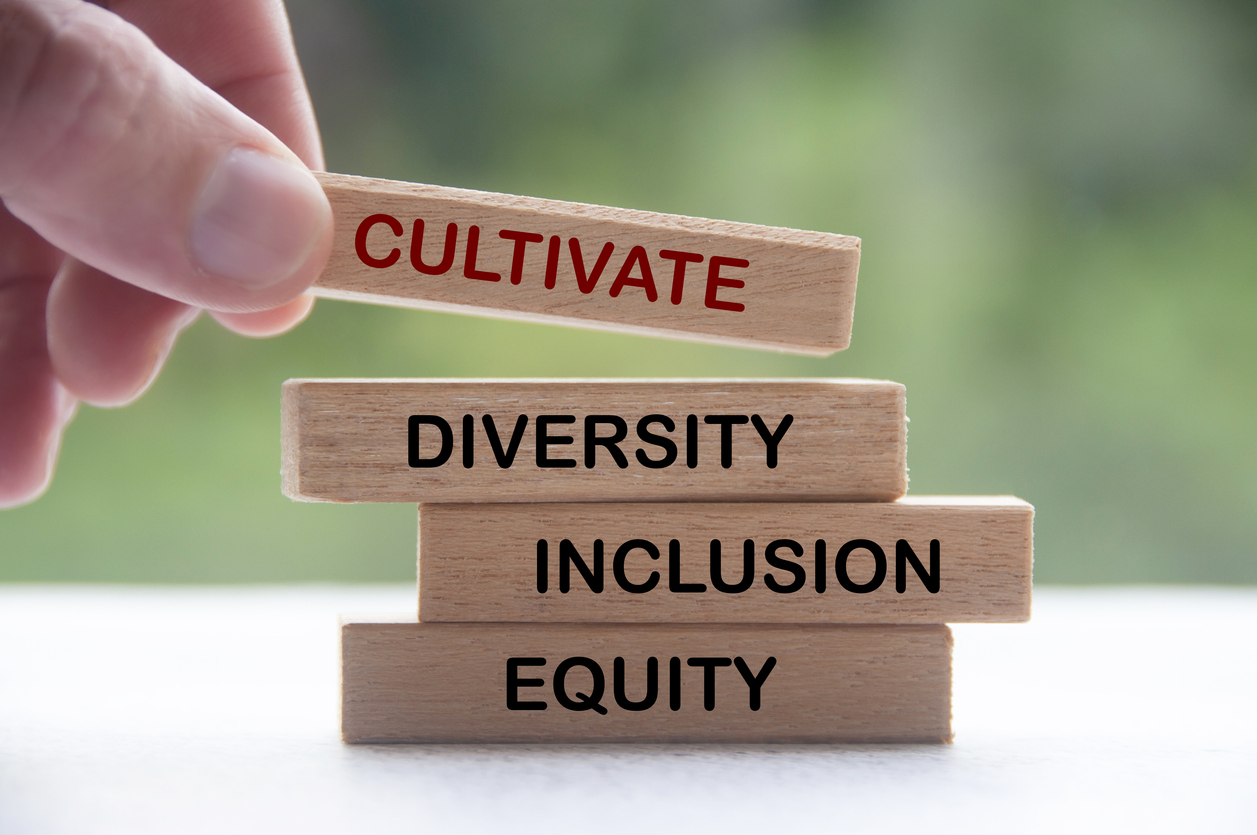Equity, Diversity, and Inclusion
Addressing Practices in Equity, Diversity, and Inclusion
In many ways, this last year has created a crossroads for human service organizations. The effects of the COVID-19 pandemic have placed children and families of color at greater risk, with disproportionate impact on Black communities. Demands for a reckoning on racial injustice and inequity in this country have called for fundamental and overdue changes to systems, institutions, and practices.
COA is committed to an accreditation process that supports organizations to advance equity, diversity, and inclusion. Our work to focus on racial and other inequities includes identifying where our accreditation standards can be strengthened to reflect the expertise, lived experiences, and strategies at the forefront of anti-racism work, and also highlighting areas of current practice where organizations should look to address discrimination and disparity.
In this post, we highlight some of those key areas that speak to equity, diversity and inclusion, such as community involvement and advocacy; representation in the workforce; training content; data collection and measurement; and culturally responsive service provision.
Community involvement and advocacy
Human service organizations do not exist in a bubble. They are shaped and often constrained by the same systemic biases and inequities that exist in legislation, policies, regulations, and funding streams. Ongoing community involvement, that includes outreach, education, and advocacy, is one way organizations can leverage available resources for the communities they serve and amplify the voices of their stakeholders. Our governance standards reflect the importance of partnership and communication within the community to effect change within organizations, communities, and in the systems of which they are a part.
GOV 3.02
The organization conducts ongoing community outreach and education to:
- communicate its mission, role, functions, capacities, and scope of services;
- provide information about the strengths, needs, and challenges of the individuals, families, and groups it serves;
- build community support and presence and maintain effective partnerships; and
- elicit feedback as to unmet needs in the community that can be addressed by the organization as its top advocacy priorities.
Examples: Examples of public outreach and education activities may include:
- regular communication with the media and the general public;
- informing the public of the positive impact the organization’s programs are having on the community and its residents; and
- fostering positive relationships with the local media.
By building relationships and deeply engaging communities, organizations can identify unmet needs and build coalitions with the capacity to advocate for legislation and policies that will positively impact children, adults, and families. Organizations connect people to services, support, resources, and neighbors. COA promotes collaboration as a way for organizations to refine and leverage their service array and stay responsive to changing community needs. The standards emphasize the importance of collaboration within the organization and community at large through sustained communication across stakeholder groups.
GOV 3.03
The organization collaborates with community members and persons served to advocate for issues of mutual concern consistent with the organization’s mission, such as:
- making improvements to existing services;
- filling gaps in service to offer a full array of community supports;
- the full and appropriate implementation of applicable laws and regulations regarding issues concerning the service population;
- improved supports and accommodations for individuals with special needs;
- addressing community-specific needs including cultural and linguistic diversity; and
- service coordination.
Representation in the workforce
COA is intentional about communities served being represented throughout an organization, from program staff to executive leadership to the governing body. It is vital that the people served feel connected to and identify with the people and organizations with whom they are involved. A key part of assuring representation in the workforce is managing recruitment efforts that includes a diverse applicant pool. Recognizing that this process is important to an organization’s workforce assessment, the human resources (HR) and service standards speak to specific recruitment criteria, such as cultural identities and relevant lived experience, along with retention support.
HR 2.01
Job descriptions and selection criteria:
- state the credentials, job expectations, core competencies, essential functions, and responsibilities for each position or group of like positions;
- include sensitivity to the service population’s cultural and socioeconomic characteristics; and
- are reviewed and updated regularly to evaluate their continued relevancy against the needs and goals of the organization’s programs and persons served.
Examples: Credentials can include, for example: education, training, relevant experience, competence in required role, recommendations of peers and former employers, and any available state registration, licensing or certification for the respective discipline.
RTX 2.01
Residential counselors, youth workers, adult care, and child care workers have:
- a bachelor’s degree or are actively, continuously pursuing the degree;
- the personal characteristics and experience to collaborate with and provide appropriate care to residents, gain their respect, guide their development, and participate in their overall treatment program;
- the ability to support constructive resident-family visitation and resident involvement in community activities;
- the temperament to work with, and care for, children, youth, adults, or families with special needs, as appropriate; and
- the ability to work effectively with the treatment team and other internal and external stakeholders.
Training content
In the human services sector, the workforce often does not adequately reflect the people and communities served, particularly when it comes to race and ethnicity. To address this gap, it is imperative that organizations ensure that personnel have the knowledge, awareness, support, interest, and skills necessary to effectively engage people with whom they may not share the same privileges, identities, cultural practices, or other lived experiences. Our training standards reflect the belief that staff cannot serve people effectively without a comprehensive understanding of the systemic forces, including racial bias and discrimination, that continue to shape the lives of generations of individuals and families.
TS 2.04
Training for direct service personnel addresses differences within the organization’s service population, as appropriate to the type of service being provided, including:
- interventions that address cultural and socioeconomic factors in service delivery;
- the role cultural identity plays in motivating human behavior;
- procedures for working with non-English speaking persons or individuals with communication impairments;
- understanding bias or discrimination;
- recognizing individuals and families with special needs;
- the needs of individuals and families in crisis, including recognizing and responding to a mental health crisis;
- the needs of victims of violence, abuse, or neglect and their family members; and
- basic health and medical needs of the service population.
Ensuring professional learning opportunities for all staff is essential to combating inequity in organizations where people from historically marginalized communities are frequently underrepresented in leadership roles and experience obstacles to advancement. COA’s training standards require organizations to maintain culturally responsive personnel development plans to ensure that staff have the competencies needed not only to fulfill their existing roles, but also to advance in their field and in the organization. The standards emphasize the importance of utilizing a wide array of educational methods and evaluating training effectiveness in a way that considers varying learning styles, needs, and professional development goals.
TS 1.01
A personnel development plan:
- is reviewed annually and revised in accord with an assessment of the organization’s training needs;
- incorporates a variety of educational methods;
- is responsive to the history, cultural backgrounds, and related needs of personnel;
- outlines specific competency expectations for each job category;
- provides the opportunity for personnel to fulfill the continuing education requirements of their respective professions; and
- provides opportunities to support advancement within the organization and profession.
Examples: Educational methods can include, but are not limited to:
- interactive classroom trainings;
- webinars, self-paced trainings, or other computer-assisted training models;
- coaching; and
- structured peer support opportunities.
Data collection and measurement
In order to recognize and better understand patterns of systemic racism in human services and formulate just solutions, organizations need to have the right tools to evaluate where and how disproportionality and disparity exist. COA’s Performance and Quality Improvement (PQI) standards provide the framework for implementation of a sustainable, organization-wide PQI system that increases the organization’s capacity to make data-informed decisions thatsupport achievement of performance targets, program goals, positive outcomes, and level of satisfaction experienced by the staff and people served.
Organizations can identify disproportionality and address disparity in outcomes by tracking indicators according to race/ethnicity and other demographic variables. Data analysis is key to addressing racial disparity at all levels of decision-making, from strategic and annual planning to program evaluation.
PQI 5.01
Procedures for collecting, reviewing, and aggregating data include:
- cleaning data to ensure data integrity including accuracy, completeness, timeliness, uniqueness, and outliers;
- quarterly aggregation of data; and
- developing reports for analysis and interpretation.
PQI 5.04
The organization:
- reviews PQI findings and stakeholder feedback and takes action, when indicated; and
- monitors the effectiveness of actions taken and modifies implemented improvements, as needed.
Culturally responsive service provision
The damaging effects of institutional racial inequality are particularly evident in the child welfare system, where Black and brown children and families are disproportionally represented, experience service inequities, and have significantly poorer outcomes as a result. The Family Foster Care and Kinship Care (FKC) and Public Child and Family Services (CFS) standards speak directly to the necessity of culturally relevant and responsive service provision, including identifying appropriate services for birth families, assessing and training prospective resource families, and strengthening each child’s support network.
FKC 19.03
Resource parents receive training and support to demonstrate competency in:
- supporting and facilitating children’s emotional, physical, and legal permanency;
- meeting children’s developmental needs across life domains, including addressing any developmental delays;
- caring for a child of a different race, ethnicity, culture, religion, sexual orientation, or gender identity;
- supporting children’s social identity development;
- supporting and facilitating family relationships, friendships, cultural ties, and community connections;
- collaborating with family team members and service providers; and
- managing the caregiver role, self-care, and the impact on the family.
When it has been determined to be unsafe for a child to remain with their family, prioritizing placement with relative caregivers/kin and recruiting diverse foster or resource parents are key practices for ensuring that child’s connection to their communities and their cultural identities remain. Additionally, annual resource family recruitment plans should include targeted outreach activities that reflect the needs and characteristics of children in care. COA’s standards emphasize the importance of providing the support, investment, and resources necessary to address the unique needs of kinship caregivers in service to the children, families, and communities that they and the organizations with whom they partner serve.
FKC 7.03
In order to ensure children are in the most family-like and familiar setting possible, the organization makes reasonable efforts to ensure children are placed:
- with siblings;
- with kin; and
- with families that reside within reasonable proximity to their family and home community.
COA is committed to ending systemic racism, oppression, and discrimination, and will continue to push forward standards of best practice that are relevant; reflect our commitment to equity, diversity, and inclusion; and support human services organizations in making positive, meaningful, and lasting impact in their communities.
As we continuously assess where the accreditation standards can be strengthened and further informed by best practices in anti-racism work, we want to hear from you. Please share your experiences and feedback about advocacy, staff development, training, and collecting outcomes by race at the link below. We welcome your input.



